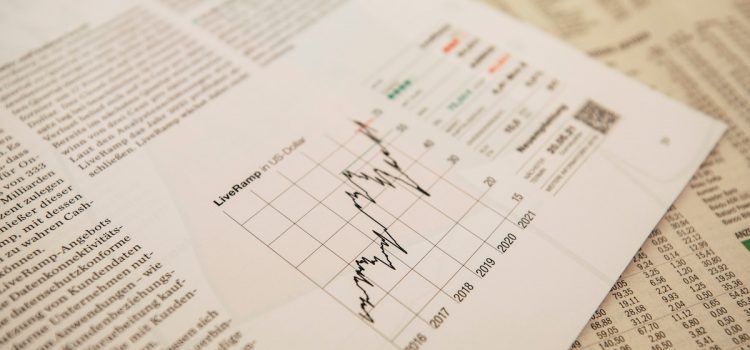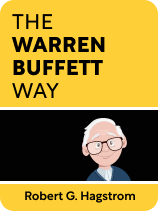

This article is an excerpt from the Shortform book guide to "The Warren Buffett Way" by Robert G. Hagstrom. Shortform has the world's best summaries and analyses of books you should be reading.
Like this article? Sign up for a free trial here.
How does Warren Buffet determine whether a company is financially sound? What’s his “one-dollar test”?
If you want to figure out whether a company is on solid financial ground, here’s what you need to evaluate, according to Warren Buffett: ROE (return on equity), owner earnings, profit margins, and the “one-dollar test.” Robert G. Hagstrom discusses Buffett’s analysis of these factors in The Warren Buffett Way.
Continue reading to learn how Buffett assesses a company’s finances before deciding whether to invest in it.
Buffett’s Analysis of a Company’s Finances
Hagstrom notes that, although investor Benjamin Graham’s influence is most evident in Buffett’s approach to value investing, it also shaped Buffett’s preference for quantitatively analyzing companies’ finances—typically over a five-year time frame since financial data are volatile on a yearly basis. In particular, Hagstrom explains that Buffett seeks companies that have a high return on equity (ROE), owner earnings, profit margins, and the ratio of retained earnings to share value. These metrics indicate good financial health.
Return on Equity
For Warren Buffett, ROE is the best indicator of how efficiently a company generates profits. Although, he tweaks several aspects of the standard definition of return on equity to isolate financial factors alone.
Generally, ROE equals a company’s operating earnings (its revenue minus operating expenses) divided by its shareholder equity (its assets, such as inventory, minus its liabilities, such as debts). For instance, if a company’s operating earnings were $75 million over the course of the year and its shareholder equity were $50 million, its return on equity ($75 divided by $50) would be $1.50.
(Shortform note: Buffett’s definition of ROE as operating earnings divided by shareholder earnings is somewhat atypical–ROE is standardly defined as a company’s net income divided by its shareholder equity. In practice, Buffett’s definition yields slightly higher ROEs, since net income subtracts operating and non-operating expenses from a company’s operating earnings, meaning that net income is less than operating earnings alone.)
However, when calculating ROE, Buffett excludes capital gains and losses, since he wants to look solely at the business’s performance rather than how well the company has invested its money. Moreover, Hagstrom notes that Buffett includes the original cost of securities that a company owns when examining its net worth, rather than their current market value, so that net worth isn’t affected by external factors such as the stock market’s performance. After all, if a company’s stock holdings rise dramatically one year, increasing its net worth, this could dwarf impressive operating earnings when looking at return on equity.
(Shortform note: When companies own stock in other publicly traded companies, it’s known as cross-holding. For example, Buffett’s own company, Berkshire Hathaway, holds stock in several other companies, making it a holding company–a company that doesn’t manufacture goods or services of its own, but rather holds controlling stock in other companies.)
Owner Earnings
Next, Hagstrom points out that Buffett assesses companies’ future earnings prospects using owner earnings, a metric he developed as an alternative to the more common cash flow, which tends to overvalue certain companies.
Cash flow, Hagstrom notes, is roughly the amount of cash going into (or out of) a company in a given year. Traditionally, it’s defined as a company’s net income plus its depreciation (how much of its assets’ values have been lost), depletion (how much a company spends extracting natural resources), and amortization (the cost of intangible assets, like patents, spread out across their lifespan).
(Shortform note: Depreciation, depletion, and amortization are added back to net income to determine cash flow because they’re non-cash expenses. In other words, they initially lower your net income, meaning they have to be added back to net income to calculate the actual cash that is going in and out of your company.)
However, according to Hagstrom, Buffett realized that cash flow fails to include capital expenditures—money used to purchase or repair physical assets, such as heavy machinery in a factory. Because many companies have capital expenditures that at least offset their depreciation, they have cash flows that are misleadingly inflated relative to the actual money going in and out of the company. For this reason, Buffett developed owner earnings, which is simply cash flow minus capital expenditures; this metric, he suggests, is less likely to become overinflated.
(Shortform note: Industries that require costly assets have more pronounced capital expenditures than others. For instance, companies in the automotive, airline, and oil industries all have outsized capital expenditures, as they require expensive factories, airplanes, and oil rigs, respectively. By contrast, companies in the software industry typically have much lower capital expenditures, as software engineers need few expensive assets.)
Profit Margins
Though Buffett modifies the definition of return on equity, and outright invents the notion of owner earnings, his approach to profit margins is much more mainstream. According to Hagstrom, Buffett prefers investing in companies with high profit margins because high profit margins indicate a willingness to cut unnecessary expenses.
Profit margins are a company’s profit divided by its revenue. For instance, if a company’s revenue were $100 million and its profit were $75 million, then its profit margins would be 75%. Since profit equals revenue minus expenses, Buffett reasons that companies with high profit margins are likely those that cut costs because one natural way to increase profits is to cut extra spending, making these companies ideal investment targets—after all, profitability is closely correlated to shareholder value.
| Profit Margins and Pricing Power In addition to cutting costs, companies can also increase their profit margins if they have pricing power–the ability to raise prices while maintaining the same level of demand. Often, companies with pricing power offer a unique product with no competitors, allowing them to increase prices without fear of being underpriced by competitors. For example, experts note that Apple has pricing power because the iPhone is often considered superior to all competitors. Given the ease with which pricing power allows companies to increase profit margins, it’s unsurprising that Buffett has elsewhere called it the most important factor in evaluating a business–more so than even company management. After all, companies with pricing power are shielded against the harms of inflation because they can simply raise prices, making them resistant to the economic downturns that can sink other companies. |
The One-Dollar Test
According to Hagstrom, Buffett’s final method for judging companies is whether they satisfy the “one-dollar test.” These are companies whose market value increases by at least one dollar for every dollar of earnings they retain.
The one-dollar test, Hagstrom notes, shows how effectively companies use their retained earnings—that is, their net income after paying dividends to shareholders. He suggests that companies that savvily re-invest their retained earnings will see their market value increase proportionately. So, companies whose market value increases by at least one dollar for every dollar of retained earnings are likely those that know how best to reinvest their earnings, making them an attractive investment target.
(Shortform note: Though Buffett’s one-dollar test sounds simple, Hagstrom doesn’t explain how to apply it in practice. To do so, you first need to calculate retained earnings over a given time frame by subtracting a company’s dividends per share from its earnings per share (its net profit divided by the number of its outstanding shares). Then, you simply compare its stock price differential to its retained earnings to see whether the ratio is at least one-to-one. For example, if a company’s stock totaled $100 billion at the end of 2022 and $140 billion at the end of 2023, yielding a $40 billion difference in market value, then it will pass Buffett’s one-dollar test so long as it retained $40 billion or less in earnings.)

———End of Preview———
Like what you just read? Read the rest of the world's best book summary and analysis of Robert G. Hagstrom's "The Warren Buffett Way" at Shortform.
Here's what you'll find in our full The Warren Buffett Way summary:
- How to invest like Warren Buffett and earn above-market returns
- How to assess companies to identify which ones to invest in
- Tips for managing your portfolio and avoiding psychological mistakes






